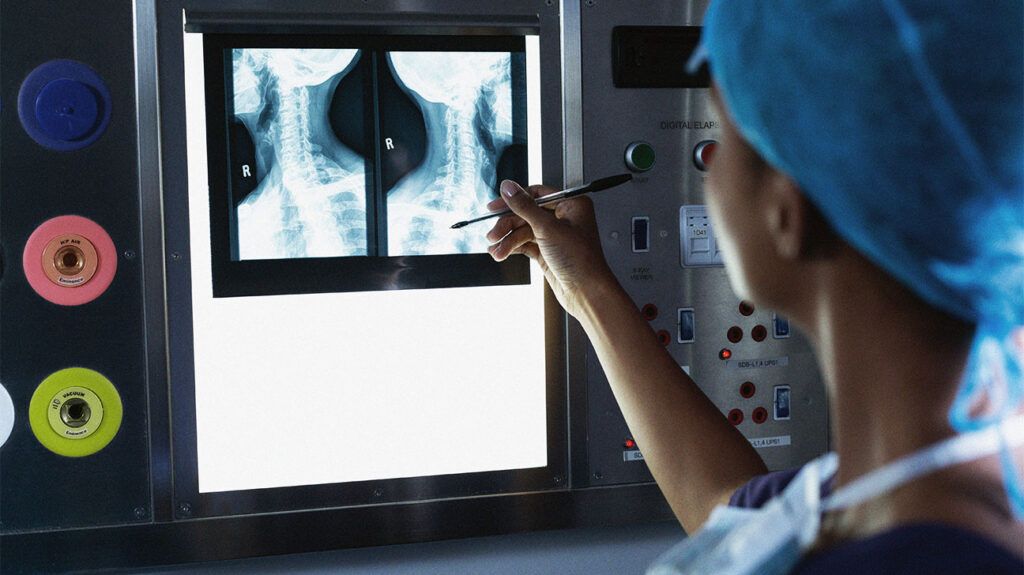Pleural mesothelioma is a type of cancer that grows in the tissue that lines the lungs and chest wall. Symptoms can include chest pain, shortness of breath, and a persistent cough.
The mesothelium is a single layer of cells that lines the inside of several body cavities, such as the chest and abdomen. The mesothelium also lines the outer surface of many internal organs.
Pleural mesothelioma occurs when the cells lining the pleura in the chest cavity grow atypically.
This article discusses the symptoms of pleural mesothelioma, as well as possible causes, treatments and other details of the condition.

Pleural mesothelioma is a
This condition can lead to a thickening of the pleura and the growth of cancerous tumors. The cancer may then spread locally throughout parts of the body, such as the chest wall or diaphragm. The disease can also spread to distant parts of the body via the lymph nodes, although this is not common.
There are three subtypes of pleural mesothelioma:
- Epithelioid: This is the most common type of pleural mesothelioma. It causes cancer cells to grow in organized clusters that spread locally. It is less likely to spread to distant parts of the body than other forms of pleural mesothelioma.
- Sarcomatoid: These cells form in a longer, thinner shape and grow in a more disorganized way. They appear similar to connective tissue, or sarcomatoid, cells. This type of mesothelioma is more likely to invade local tissues in the body and may be more resistant to treatment.
- Biphasic or mixed: This refers to pleural mesothelioma where both epithelioid and sarcomatoid cells are present. The characteristics of this type of mesothelioma depends on the amounts of each type of cell.
Learn more about pleural mesothelioma.
Many early symptoms of pleural mesothelioma may have similarities with symptoms of less serious illnesses. As a result people may have some symptoms for a
The symptoms can include:
- chest or lower back pain
- shortness of breath
- difficulty swallowing
- swelling in the face and arms
- a persistent cough
- unexplained weight loss
- appetite loss
- fatigue
- fever and sweating
- changes to the shape of fingers and fingernails
Symptoms such as shortness of breath and coughing often occur due to a build up of fluid in the pleura, called pleural effusion, which presents in about
Learn about the differences between mesothelioma and lung cancer.
There are several ways that asbestos exposure may lead to pleural mesothelioma. These include repeated inflammation of the pleura, changes to the cell replication process, and increased production of free radicals. These are unstable atoms in the body that can cause damage to cells.
This means that those who work in occupation where asbestos exposure is more common, such as construction, have a higher risk of developing the condition. Not everyone who is exposed to asbestos will get pleural mesothelioma, but those who do may develop the condition long after the exposure.
Other causes for pleural mesothelioma include exposure to certain types of radiation and exposure to erionite, which is a fibrous mineral similar to asbestos.
Learn about the links between asbestos and lung cancer.
If a doctor thinks a person may have pleural mesothelioma, they will take a full medical history, ask questions about their previous or current occupations, and assess if they could have had exposure to asbestos.
A doctor may use several
These include:
- chest X-rays, CT, MRI, or PET scans
- thoracentesis, which involves removing a sample of fluid from the pleural space
- biopsy
- blood tests
While testing can help determine the risk or stage of pleural mesothelioma, testing biopsied tissues and fluid samples is the only way to know for sure if a person has the condition.
Learn more about biopsies.
How a doctor approaches treatment for pleural mesothelioma will depend on the stage of the cancer, as well as other factors, such as a person’s overall health.
It is usually not possible to cure pleural mesothelioma. Sometimes, surgeons can remove some or all of the cancer (resectable), but removing all of the cancer is possible in
Whether a surgeon can remove the tumor depends on various factors, such as its size, position and type. However, resection may not be an effective treatment for sarcomatoid pleural mesothelioma.
The primary treatment for unresectable pleural mesothelioma is
Other treatments include:
Often, a person’s treatment plan may include a combination of two or more of these treatments.
Learn more about chemotherapy.
Pleural mesothelioma is an aggressive type of cancer, and in many a cases, a person does not receive a diagnosis until the cancer has reached a more advanced stage. The disease is life threatening and treatment is not usually curative.
Survival rates depend on
However, each case of pleural mesothelioma is different. Survival rates do not guarantee how long a specific person with this condition will live.
A doctor can provide palliative care for a person living with pleural mesothelioma. This may involve prescribing pain relievers or small procedures that can make a person more comfortable and reduce symptoms.
Pleural mesothelioma is rare and aggressive type of cancer that grows in the lining of the chest cavity. It usually occurs due to prolonged exposure to asbestos, as the fibers can travel through the lungs and into the pleural space, causing inflammation and cell changes.
A doctor may suggest several types of treatment for pleural mesothelioma, including surgery and chemotherapy. However, the condition is difficult to treat and long-term survival is rare. However, a doctor can offer treatment that can reduce symptoms, make a person more comfortable, and improve their quality of life.

